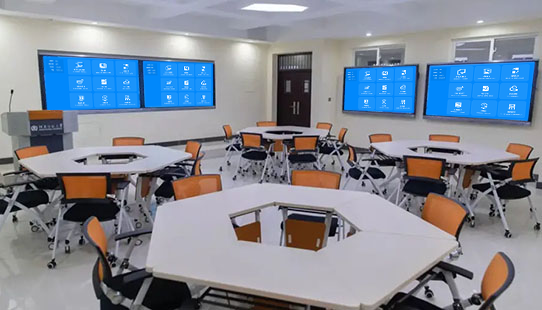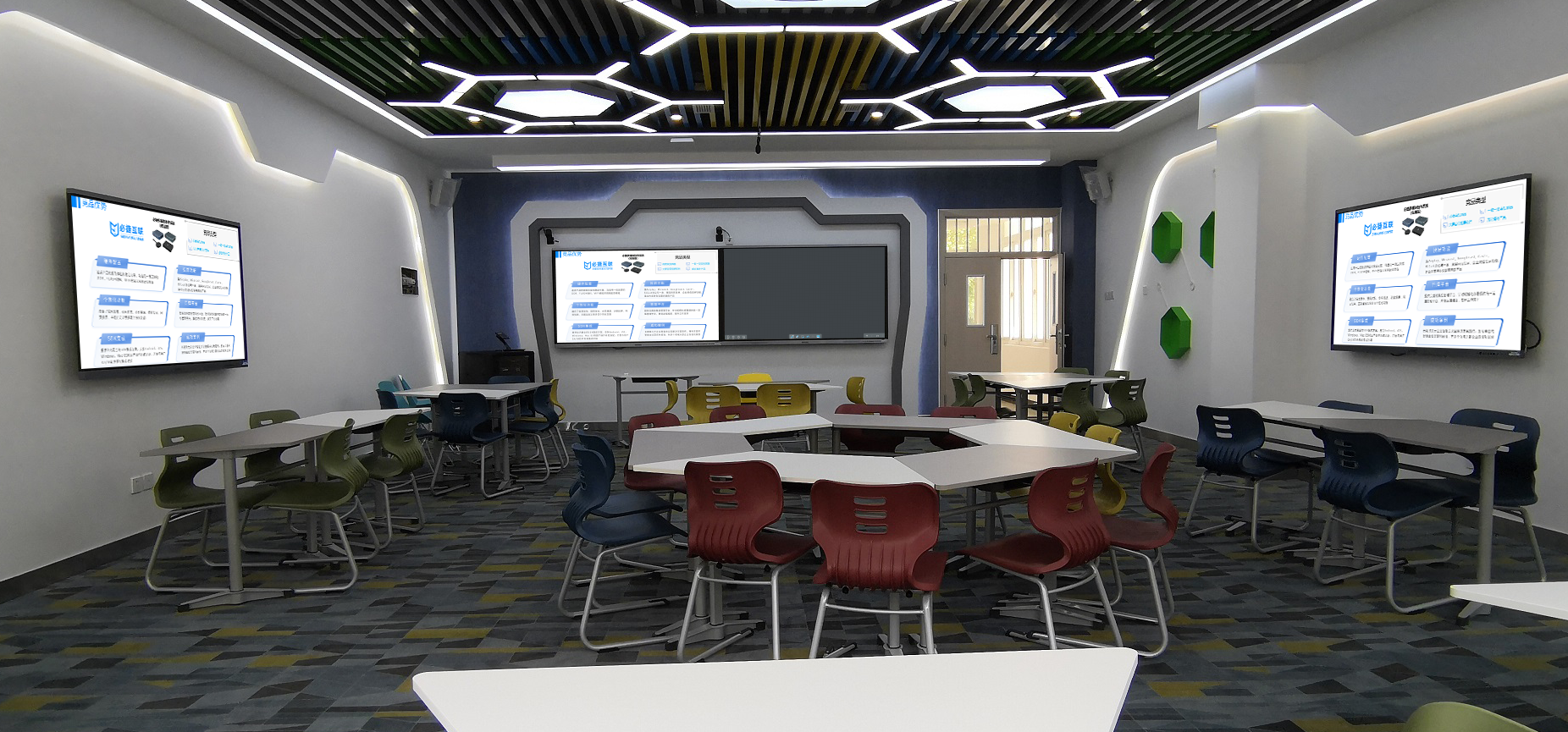Use a screen-mirroring device to enable multi-screen interaction and more efficient device collaboration.
Do you want to break free from the limitations of using your computer, phone, and large screen as separate devices? The BiJie Screen-Mirroring Device helps you easily create a multi-screen interactive environment. It supports real-time content flow between multiple devices, two-way operation, and synchronized annotations. It’s perfect for office collaboration, family sharing, and interactive training. With no complex setup, it lets multiple screens work together seamlessly, improving both efficiency and experience.
Set up an Interactive Space in 1 Minute, with Zero Technical Barriers
The setup is so simple the whole family can use it.
- Quick Device Connection: Plug the screen-mirroring receiver into your main screen (conference display/TV/projector) and power it on. The large screen will show the unique group name. Plug the transmitter into your computer, and connect your phone or tablet to the same Wi-Fi network (or to the screen-mirroring device’s hotspot if there’s no network). Your devices will automatically join the group, connecting in just 10 seconds.
- One-Click Collaboration: On your computer, click the “Interactive Mode” button. On your phone/tablet, scan a QR code to confirm. Multiple screens will instantly sync, allowing you to seamlessly transfer presentations, photos, and videos between devices. No software installation is needed, and new users can master it after one try.
Core Advantages: Deeper Multi-Screen Interaction
Cross-Screen Content Flow: Breaking Down Device Barriers
- Instant, Lag-Free Transfers: Instantly transfer documents from your computer, photos from your phone, or mind maps from your tablet to other screens with a single click using the device’s “cross-device push” feature. No need for USB drives or WeChat transfers, improving file transfer efficiency by 70%.
- Complementary Multi-Screen Display: Use the main screen for core content (e.g., meeting plans, courseware) while pushing supplementary materials (e.g., data charts, experimental videos) to a side screen. Phones and tablets can be used to add real-time details, making information more dynamic and easier to understand.
- Relay Editing: Start editing a document on your computer, continue with annotations on your tablet, and add text from your phone. All changes sync in real time across all screens. Multiple people can collaborate without repeatedly transferring files, making the workflow smoother.
Two-Way Interactive Operation: A More Flexible Experience
- Unrestricted Cross-Device Control: After mirroring content from your computer to the main screen, you can use your phone to remotely turn pages, pause, or annotate. When displaying a design on a tablet, you can use the computer to pull up reference materials and push them to a side screen. Control is not limited by the device—you can control content from wherever you are.
- Real-Time Annotation for Collaborative Refinement: During a discussion, multiple people can annotate a plan on different devices (e.g., highlighting on a computer, adding suggestions on a phone). Annotations sync in real time to all screens. There’s no need to huddle together, making remote collaboration feel “face-to-face.”
- Dynamic Data Synchronization: During training, student quiz results and interactive feedback are automatically compiled by the screen-mirroring device and displayed as a chart on the main screen. The instructor can instantly grasp progress and adjust the pace, avoiding a one-way lecture format.
Adaptability for All Devices and Scenarios
- Supports Windows, macOS, iOS, and Android systems. Compatibility with over 98% of laptops, phones, and tablets from brands like Lenovo, HP, Apple, and Huawei, allowing older devices to work smoothly without model restrictions.
- Supports mirroring (syncing the entire screen), directed push (sending specific content), and split-screen display (showing multiple contents at once) so you can switch as needed to fit different scenarios.

Real-World Applications: Multi-Screen Empowerment Across Fields
Office Collaboration: Doubled Efficiency
- When discussing a proposal, you can mirror the main framework from your computer to the main screen. Colleague A can use a tablet to add annotations and suggestions, while Colleague B uses their phone to snap and add photos of competitor products. Everything syncs in real time, so you don’t need to switch devices during the discussion. You can complete three rounds of proposal optimization in just one hour.
- During a remote meeting, the local team can use multiple screens to display proposal details. Remote colleagues can join the interaction from their phones or computers, adding real-time annotations and questions. Cross-regional collaboration feels like you’re “in the same room,” making communication more efficient.
Family Sharing: A Warmer Atmosphere
- During a family gathering, everyone can take turns mirroring travel photos or videos of the kids to the TV from their phones. A tablet can simultaneously play background music, and a computer can pull up old photos. Multi-screen collaboration creates a “family memories exhibit,” so no one has to huddle around a small screen.
- When a child is taking an online class, they can mirror the class from a computer to the TV (which is easier on the eyes), take notes on a tablet, and look up information on a phone. The clear division of tasks improves focus, and parents can even remotely control the class progress from their phones.
Interactive Training: More Engaging Lessons
- An instructor can mirror a presentation from their computer to the main screen, annotate key points on a tablet in real time, and push pop quizzes to students’ devices. Student answers are automatically compiled into a chart and displayed on the main screen, allowing for targeted explanations of incorrect answers. This boosts interaction by 60% compared to traditional teaching.
- During hands-on training, you can mirror the steps to the main screen and use a side screen for close-ups. Students can take a photo of their own work with their phones and upload it. The instructor can then annotate and guide them on the main screen without having to check each person’s work individually, improving training efficiency by 40%.
Practical Details: Making Daily Use Easier
- Stable and Interference-Free Transmission: With dual-band (2.4GHz + 5.8GHz) transmission technology, the latency is ≤15ms for multiple devices interacting at the same time, and the disconnection rate is less than 0.1%. It won’t let you down during important meetings or training sessions.
- Privacy and Security: Supports “Interactive Access Control”, so only authorized devices can join the group. Mirrored content is encrypted, ensuring that office data and family photos are not leaked.
- Portable and Easy to Store: The screen-mirroring device is palm-sized and weighs less than 40g. You can just toss it in your computer bag for business trips or travel. It’s plug-and-play, allowing you to set up a multi-screen interactive environment anywhere, whether in a client’s office or an outdoor training venue.
Whether for office collaboration, family sharing, or training, using this screen-mirroring device to enable multi-screen interaction can break down device barriers. It transforms multiple screens from “independent use” to “collaborative power”, making every interaction simple, seamless, and efficient.